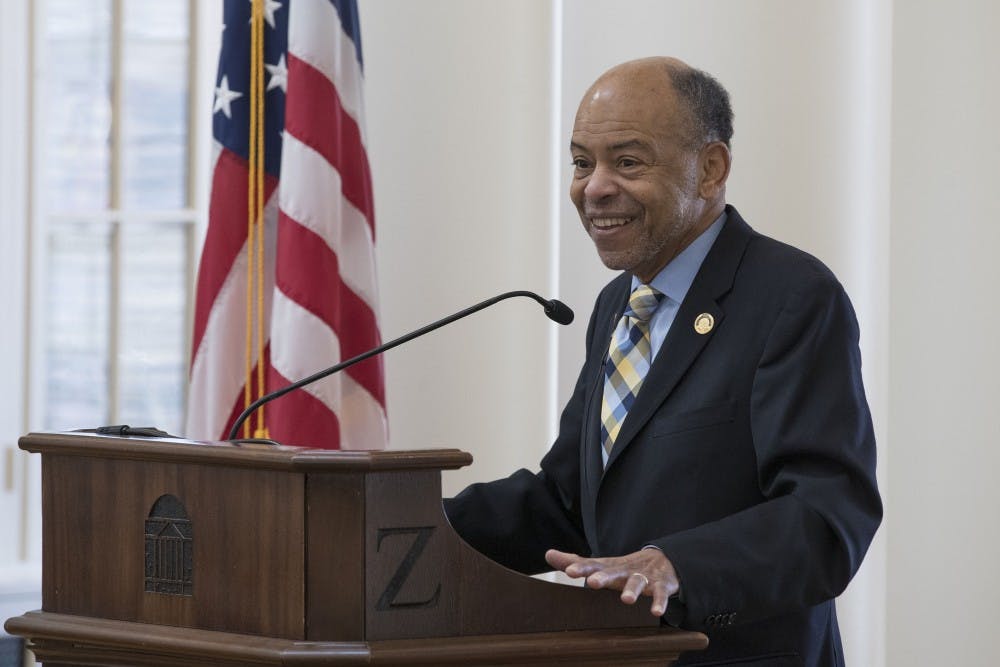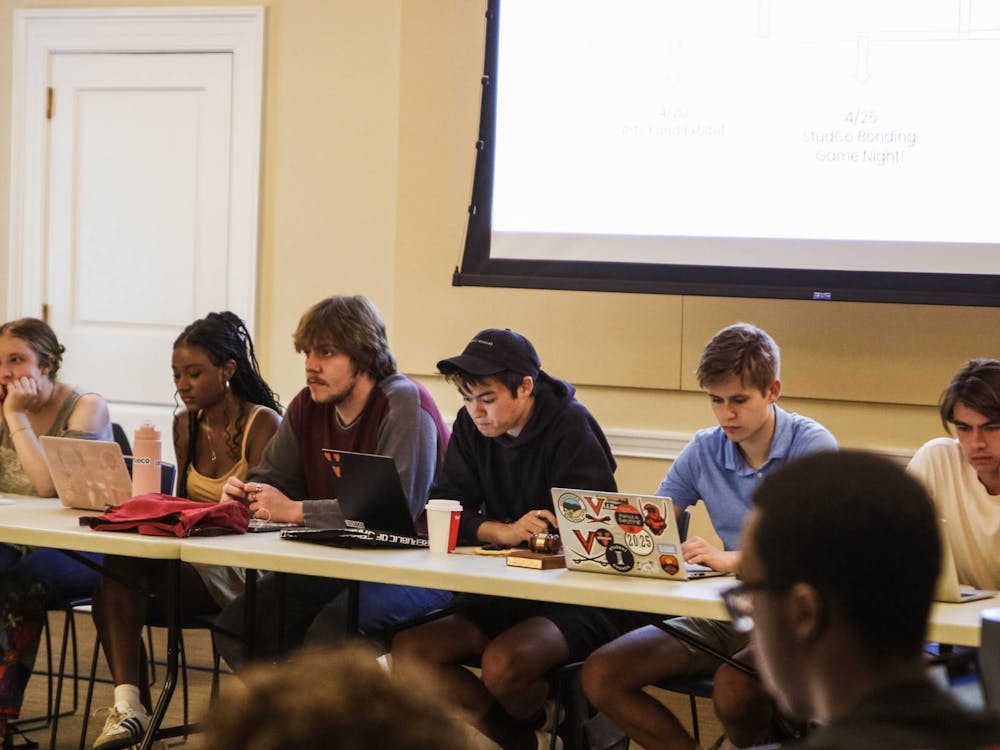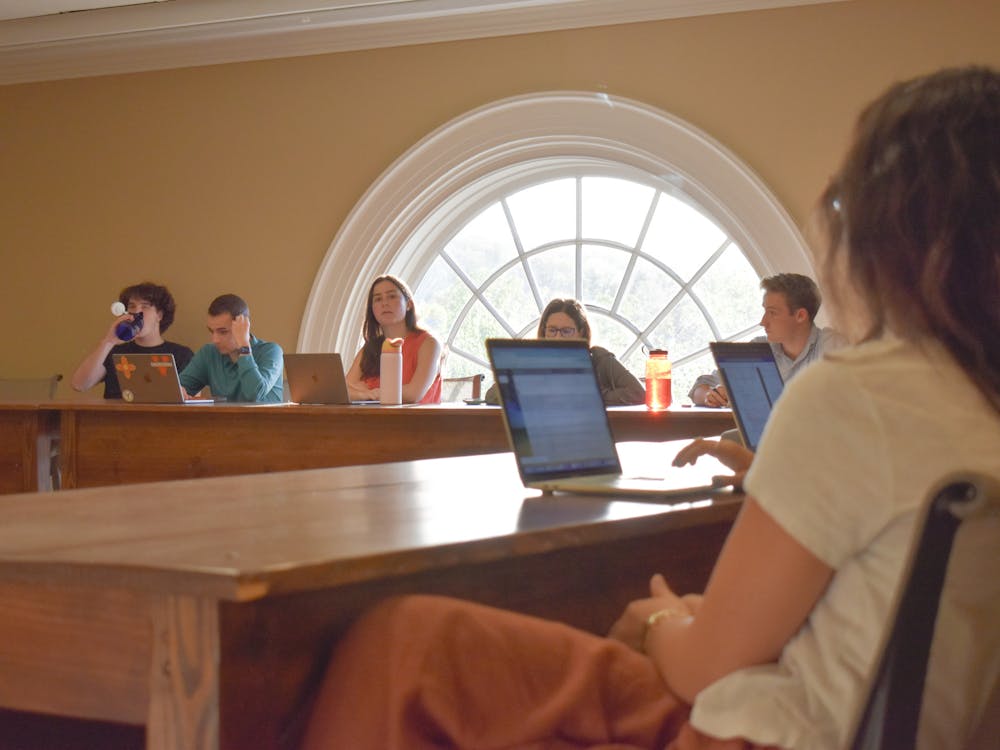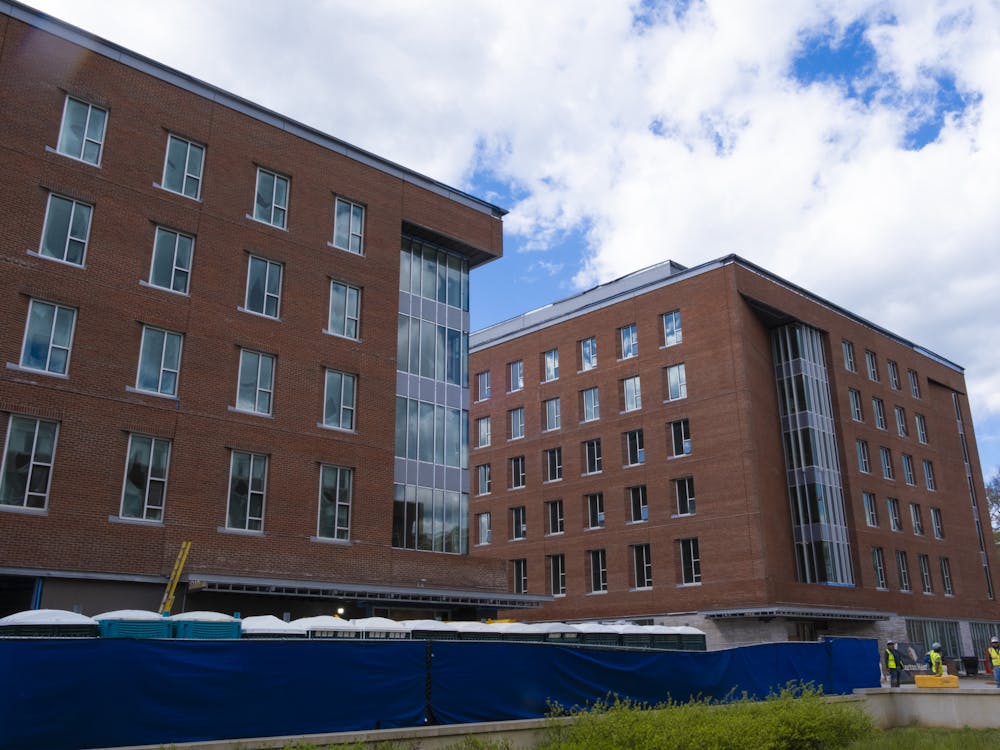Rep. James R. Roebuck, Jr., Democratic Chairman for the 188th Legislative District in Philadelphia County — as well as the University’s first black Student Council President — spoke in the Rotunda Dome Room on Friday as part of the University’s Symposium and Presentation Series: The Road to Charlottesville: Revisiting Equity, Education, and Engagement. Around 40 faculty and students were in attendance at the event.
Roebuck reflected on his early life and time at the University, beginning with his high school experience at a diverse Central High School in Philadelphia, and the leadership he witnessed during that time from his community pastor, who encouraged him to attend Virginia Union for his undergraduate degree.
“I went to Virginia Union at a time when that campus was caught up in civil rights activity,” Roebuck said.
Prior to receiving his Bachelor’s Degree in 1966, Roebuck was involved in a protest to desegregate movie theaters close to campus, as well as helping to establish a Virginia Union chapter of Young Democrats, “the first chapter on any African American campus in the South.”
Roebuck decided to continue his education at the University of Virginia after graduating and quickly became a leader in the community. He was elected Student Council President as a graduate student for the 1969-1970 school year.
“There was a dichotomy between the University’s undergraduate and graduate school,” Roebuck said. “The undergraduate school was still a ‘gentleman’s university’, still a ‘coat-and-tie university, still a somewhat narrowly-based university. The graduate school was very different … It had women, it was very diverse.”
Roebuck also spoke about the “social isolation” he felt while on grounds, commenting on differences between the prior experiences of the first African American students who came to the University in the 1960s and experiences for students who came later. When African American students had first arrived in the 1960s, the greater Charlottesville community played a larger role in their integration.
He also recounted an event to support his assertion that “the general environment was not a friendly one.” During a trip to a NAACP State Convention in Petersburg, Virginia, Roebuck and three other black students were the only ones served at a nearby restaurant; the white student with them was refused service by a waitress.
“She said ‘President Johnson makes us serve you,’ pointing to the four black people there,” Roebuck said. “‘We won’t serve him.’ They would not serve the white guy with us. We got up and walked out… It was a process of learning and adjusting.”
Roebuck chose to focus on themes of diversity and inclusion during his time as Student Council President.
“I think that looking at 1970 in particular, two dominant issues for me always were the effort to expand equal opportunity at UVA, to open up ways in which more students knew that this University even existed and that they could come here, and break down those barriers that would allow that,” he said.
Roebuck spoke about the importance of coeducation at the University to him as well, stating that he wanted to see a University that truly offered equality of opportunity for students of all types.
“I would suggest that at least some of the young men in the college that I spoke to would have rather had more black men at UVA, than to have women here at all. That was a common attitude,” he said.
On Feb. 18, 1969, Roebuck was a part of a coalition of students that met at the Rotunda for a rally in which a list of student demands was delivered to University President Edgar Shannon. The demands included the elimination of growing militarism on grounds, diversification of the student body and establishing an African American Studies program by fall of 1970.
At the rally, around 1,000 students demanded the end of any traces of Jim Crow-era laws, the elimination of application fees for low-income students and for the University to address the issues of diversity within the student body and its curriculum. Students at the rally also demanded a higher minimum wage for low wage-earners at the University and for the University to raise its own minimum wage regardless of the Commonwealth of Virginia’s legislature.
University students have, to this day, rallied for higher minimum wages to support University employees. On March 1, student activists from the Living Wage Campaign held a rally outside the Board of Visitors meeting at the Rotunda. Six days after the rally, University President Jim Ryan announced that the University would raise its current minimum wage of $12.75 per hour to $15 by Jan. 1, 2020 and would affect full-time, benefits-eligible employees.
“I am distressed to learn that the efforts to promote greater equality for people who work here is a fight that is still going on now 50 years later,” Roebuck said. “I find that almost incomprehensible...there are still things to be done.”
Claudrena Harold, prof. in the Woodston Institute for African American Studies and History program, noted in her comments at the event on Friday that without Roebuck and his fellow students’ actions, “I don’t think I would be standing here before you.”
Harold co-directed a short film entitled “We Demand” with Kevin Jerome Everson, film prof. in the McIntire Department of Art, that captures Roebuck’s work in formulating the demands. It played at MIT’s List Visual Arts Center and premiered at Berlinale’s 2016 Forum Expanded Program. It was also shown to attendees at Friday’s event.
Speakers addressed not only progress over the last 50 years for the University, but also spoke about their hopes for the next 50 years.
“If we want to effect change we have to do it through partnership and engagement,” said Louis Nelson, Vice Provost for Academic Outreach at the University.
“Our president Jim Ryan … talks about the importance of this University being great as well as good,” said Tom C. Katsouleas, University executive vice president and provost. “What I think that means is taking the scholarship excellence that we have and bringing it to grand challenges that we have for society like the questions that this program is addressing.”
Roebuck also commented on the recent exposure of Virginia yearbooks that contain blackface and the reactions of politicians who wore it themselves in their college days.
“I can’t imagine that someone would want to be in blackface next to a Klansman in a yearbook that represents your success in academic achievement,” Roebuck said. “It concerns me that even in 2019 this is a thing that is emerging.”
Roebuck ended his speech with a promise of support to the University community.
“I am still very much a Wahoo, a supporter of the University … I know that there are still issues at hand and I look forward to doing what I can to move your agenda forward,” Roebuck said. “With anything I can do to help you, you have my full commitment.”
Following Roebuck’s remarks, the symposium continued with a question and answer period led by Alex Cintron, current University Student Council president, which was opened up to attendees.
Time was also designated for “community conversations” looking to the next 50 years at the University. Karen Abrams, program director for equitable development at Heinz Endowment, and Clarence Green, principal CEO of Citizen Needs and owner at Underground Shorts Media LLC, both provided insight.
The symposium concluded with the important questions “Where do we go from here—together?” and “Who Will Do What, When, and Where?”





